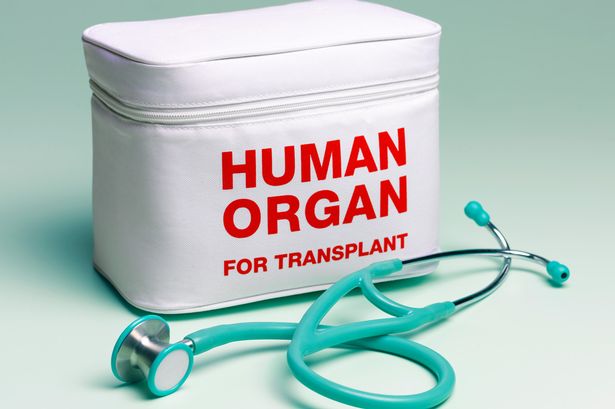This ESRD facility monthly newsletter highlights the latest ESRD insights and resources. Our goal is to provide you with a resource that makes it easy for you to stay on top of trends and support you in providing the best possible care for those you work with and serve.
In This Issue:
We want to take this opportunity to recognize the vital role of our dialysis technicians. Dialysis is one area of healthcare that absolutely requires a team approach and that has never been more true than now. Dialysis units with skilled and caring technicians are continuing to provide high quality patient care, even in these stressful, short-staffed times. We appreciate each one of you who work so extremely hard and make many extra steps each day to make patients feel safe and cared for!
Patient Services Pearls
 Frequently, Network staff will call a clinic asking to speak with a particular member of the team. Many times, staff members will say “we have a new one” then seek others to find out the new employee’s name. Turnover is getting real these days! As challenging as it is for staff to learn new personnel, please know it is especially difficult for some patients.
Frequently, Network staff will call a clinic asking to speak with a particular member of the team. Many times, staff members will say “we have a new one” then seek others to find out the new employee’s name. Turnover is getting real these days! As challenging as it is for staff to learn new personnel, please know it is especially difficult for some patients.
With such frequent turnover, it is easy for staff to become accustomed to unfamiliar faces in the clinic; this is not easy for most patients. Please make an effort to welcome and introduce staff who may be temporarily assisting with clinic coverage. A simple introduction, such as “This is John. He is a PCT from our sister clinic and he will take good care of you. We are so happy to have him today!” may be all it takes to help your patients feel less anxious about unfamiliar staff.
Leadership can really make a difference on how a staff member is accepted and trusted by patients and by other staff members. Everyone is busy but never too busy to take a minute to explain to a patient or other staff member who someone is. Remember that being a new face, and seeing a new face, causes social discomfort for most people. Making a quick introduction can make an enormous difference in patient and staff relations.
Network Contact: ericka.webb@allianthealth.org
Home Dialysis
 In speaking with nurse managers over the past several months, one frequently reported barrier to home dialysis is patients’ fear of managing dialysis treatments at home. The article below has several great ideas that can be implemented in your unit to help patients master basic concepts of self-care and gain confidence in their ability to transition to a home modality.
In speaking with nurse managers over the past several months, one frequently reported barrier to home dialysis is patients’ fear of managing dialysis treatments at home. The article below has several great ideas that can be implemented in your unit to help patients master basic concepts of self-care and gain confidence in their ability to transition to a home modality.
CMS Goals
- Increase prevalent patients added to a home modality.
- Increase incident patients added to a home modality.
- Increase the use of telemedicine for home modality in rural areas.
Resources: What is Self-Care In-Center Dialysis?
Home Dialysis Contact: sheila.mcmaster@allianthealth.org
Hospital Admissions, Readmissions, and Emergency Visits
Based on review of ICD-10 codes for ESRD admissions, the Network identified an increase in vascular access complications leading to ER visits, hospitalization, and readmissions. Some complications included recent fatal exsanguinations. Please consider reviewing reasons for catheter/access failures and address them with the surgeon; assess for bleeding due to underlying infection and treat promptly; review/adjust anticoagulation regimens; monitor buttonhole accesses closely as these are prone to bleeding more often than regular accesses; have a designated vascular access manager; and find opportunities to reinforce staff knowledge of vascular access maintenance and complications. Click on the resource below to access NCC’s Vascular Access Management Week by Week and other vascular access management tools.
CMS Goals
- Decrease hospital readmissions.
- Decrease hospital 30-day unplanned readmissions.
- Decrease emergency department visits.
- Decrease COVID-19 hospitalizations.
Resource: Vascular Access Management Week by Week
Hospitalization Contact: dany.anchia@allianthealth.org
Transplant
Transplantation is the best option for most patients who want to improve their quality of life. Each member of the dialysis team plays a significant role in transplant waitlisting and helping patients be ready to receive a kidney transplant. Share the Advanced Renal Education Program on- demand roundtable webinar, “How to Help More Patients to Kidney Transplant” with your team to learn the importance of kidney transplantation and how the interdisciplinary team can support patients with the transplantation process and waitlist management.
CMS Goals:
- Increase patients added to the transplant waitlist.
- Increase the number of patients receiving a kidney transplant.
Resource: How to Help More Patients to Kidney Transplant
Transplant Contact: arlandra.taylor@allianthealth.org
Vaccinations
The 2022-2023 flu season is fast approaching. The Centers for Disease Control and Prevention (CDC) has published updated information regarding the composition of flu vaccines and vaccine information for people ages 65 and older. To view the latest information, click here. To help promote the flu vaccine, share the resources below with patients in your facility.
CMS Goals:
- Achieve patient COVID-19 vaccination rate of 80%.
- Achieve patient influenza vaccination rate of 90%; achieve 90% of staff influenza vaccination.
- Achieve patient pneumococcal conjugate 13 (PCV, Prevnar 13) vaccination rate of 56%.
- Achieve patient pneumococcal polysaccharide (PPSV, Pneumovax 23) vaccination rate of 87%. achieve PPSV vaccination rate of 80% of patients over age 65.
- Achieve patient PPSV booster vaccination rate of 43%.
Resources:
Patient and Family Engagement
 Did you know? CMS expects each dialysis facility to have a patient’s voice in monthly QAPI meetings. We understand facilities still have COVID protocols in place for patient and staff safety. So, we need to think creatively and develop ways to meet CMS expectations and keep everyone safe.
Did you know? CMS expects each dialysis facility to have a patient’s voice in monthly QAPI meetings. We understand facilities still have COVID protocols in place for patient and staff safety. So, we need to think creatively and develop ways to meet CMS expectations and keep everyone safe.
In August, the Network conducted a survey to determine which facilities are meeting this CMS requirement. Network staff will be reaching out to facilities who did not respond to the survey or reported they do not have a patient’s voice in their QAPI meetings. During these one-on-one calls, the Network will share best practices and resources.
Patient and Family Engagement Contact: debbie.odaniel@allianthealth.org
EQRS Best Practices for Keeping Your EQRS Data on Track
September Tip: Reconcile Your Roster
 Last month, we discussed the importance of checking your roster. Now, we need to determine how you know if your Dashboard is right and showing you what you need to know. The key to having the right information on your Dashboard is to be sure that your EQRS roster is right. It can be a little tedious, but it is an important step that you should take regularly to keep your EQRS data correct. The process is to download the Roster Report from EQRS and compare it to your census. You will find the report in the Reports menu of EQRS, and it only takes a few minutes to run. Once you download it, you need to compare it with your facility census. You are looking for patients who are not in EQRS but should be and patients who are in EQRS but should not be. If a patient is showing on the EQRS roster, but they died, EQRS does not know that they died. The dashboard will not prompt you, and the Network will not send you an email if EQRS does not know.
Last month, we discussed the importance of checking your roster. Now, we need to determine how you know if your Dashboard is right and showing you what you need to know. The key to having the right information on your Dashboard is to be sure that your EQRS roster is right. It can be a little tedious, but it is an important step that you should take regularly to keep your EQRS data correct. The process is to download the Roster Report from EQRS and compare it to your census. You will find the report in the Reports menu of EQRS, and it only takes a few minutes to run. Once you download it, you need to compare it with your facility census. You are looking for patients who are not in EQRS but should be and patients who are in EQRS but should not be. If a patient is showing on the EQRS roster, but they died, EQRS does not know that they died. The dashboard will not prompt you, and the Network will not send you an email if EQRS does not know.
Also, you need to look carefully at the new patients on the EQRS roster. Are they admitted correctly? If their admission reason is wrong, there could be a form due that you don’t know about. Or EQRS could be asking for a form because the admit reason is wrong. Check that the treatment setting, and treatment type are correct.
There are a couple of things to remember when comparing the EQRS roster with your facility roster. EQRS should not have AKI patients or transient patients listed. If an AKI patient gets into EQRS, then they should be discharged as Acute. If you have a transient patient and they are on your EQRS roster, they are probably missing from their home facility’s roster because they have been discharged by the system (system discharge). In most instances, if you catch this quickly, you can delete the admission from EQRS. But, if there is a discharge date in the previous admission in EQRS, it is likely that it is a system discharge. If you live by the golden rule, you probably want to call that facility and tell them what happened and let them know they need to check on that system discharge.
If you find there are two records (with two UPIs) for one patient, you have a duplicate patient. If there are two UPIs, that issue can only be resolved by the CCSQ Support Central (formerly known as the QualityNet Help Desk).
Resources: August EQRS New User slides can be accessed here.
August EQRS New User video can be accessed here.
Network 8 and 14 Service Ticket Request: https://bit.ly/ESRDServiceTicketRequest
EQRS Contacts: robert.bain@allianthealth.org or sade.castro@allianthealth.org